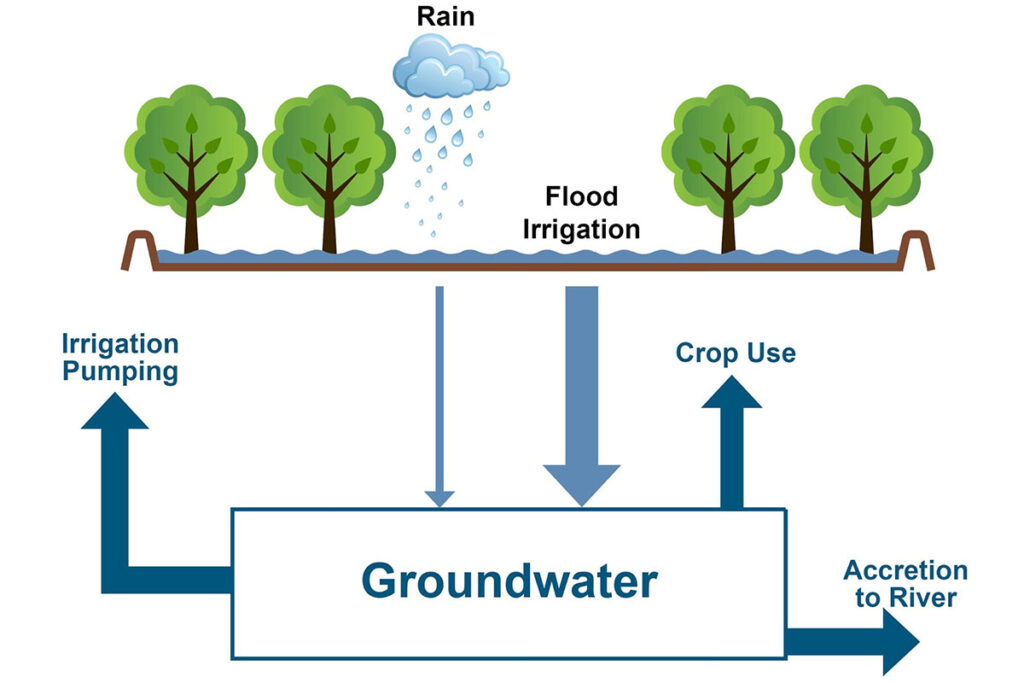Because groundwater is a limited and shared resource, and because we manage surface water via Tuolumne River that eventually recharges groundwater, TID is a leader in regional groundwater stewardship.
Even before the Sustainable Groundwater Management Act (SGMA) was signed into law in 2014, TID had always taken an active role in local groundwater management. TID has a long-standing program of monitoring groundwater levels inside our boundaries, and cooperating with other state and local entities to monitor the Turlock Subbasin. We were the first local entity to adopt a Groundwater Management Plan in 1993, and was a founding member of the Turlock Groundwater Basin Association in 1995.
SGMA set the state policy that groundwater is best managed locally. SGMA enables local agencies to manage groundwater, so long as specific actions are taken and timelines met. TID is one of 12 local agencies members of the West Turlock Subbasin Groundwater Sustainability Agency, which is one of two GSAs formed in the Turlock Subbasin to manage and regulate sustainable groundwater use (the other GSA is the East Turlock Subbasin GSA, east of TID’s irrigation service boundary). Both GSAs submitted the Turlock Subbasin Groundwater Sustainability Plan (GSP) to the state in January 2022. The GSP is a document that will guide sustainable groundwater management via programs, projects, and local groundwater regulation through 2042.
For more information on the GSP, GSA meetings, or SGMA compliance within the Turlock Subbasin, please visit turlockgroundwater.org
The practice of balancing surface water use and groundwater use to meet local requirements is known as conjunctive use.
Each irrigation season, we utilize a varied combination of Tuolumne River water and groundwater to supply our growers. Growers utilizing flood irrigation contribute to the replenishment of the groundwater supply, as applied irrigation water eventually percolates into the underground aquifer.
In normal and wetter years, surface water makes up the bulk of the supply with groundwater being drawn upon to a lesser extent. In dry years, this stored groundwater can be utilized to help meet irrigation demand that cannot be supplied by the Tuolumne River alone.
Deep percolation of surface water past the root zone is the primary method of groundwater recharge in the Turlock Subbasin. This matters because groundwater is quite often the sole source of drinking and municipal water for local communities. TID Ag Water Management Plan data indicates TID’s conjunctive use practices directly contribute to approximately 100,000 acre-feet of groundwater being recharged to the Turlock Subbasin on an annual average basis; an average that increases in wetter years and decreases in drier years.
